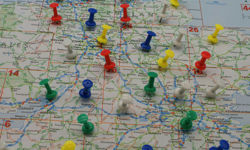IPSO upheld the complaint and has required the Mail on Sunday to publish this decision as a remedy to the breach.
The article reported on claims made by Dr John Bates, a climate scientist formerly employed at the US National Oceanic and Atmospheric Administration (NOAA), about a paper published in the journal Science that suggested that there had been no “pause” in global warming in the 2000s. Dr Bates had published a blog criticising the way the data used for the paper had been analysed and archived. The article detailed at length the complainant’s concerns with the data; it then characterised them as demonstrating “irrefutable evidence” that the paper had been based upon “misleading, unverified data”.
The article was illustrated with a graph. It plotted a red line, described as “the ‘adjusted’ and unreliable sea data cited in the flawed ‘Pausebuster’ paper”, and a blue line, described as “the UK Met Office’s independently verified record”, which it said “showed lower monthly readings and a shallower recent warming trend”. A note at the base of the graph stated that “0 represents 14°C”.
The complainant said that the significance of Dr Bates’ concerns about the archiving procedures had been misrepresented in the article, and the newspaper had taken no steps to establish the veracity of Dr Bates’ claims. World leaders had not been “duped”, as the headline said, and there was no “irrefutable evidence” that the paper was based on “misleading, unverified data”, as the article had claimed.
The newspaper said that Dr Bates had shown it examples of both fully archived climate data and the less detailed version used for the paper; putting raw data on a website is not the same thing as full data archiving; therefore the evidence that the paper’s data was unverified and misleading, was “irrefutable”.
The Committee emphasised that its central concern was whether the article had accurately reported Dr Bates’ concerns. It decided that the newspaper’s claims that Dr Bates’ testimony had provided “irrefutable evidence” that the paper had been based on “misleading, ‘unverified’ data”, leading – as the headline claimed – to world leaders being “duped” over global warming, and “convinced” to invest billions in climate change, went much further than the concerns which Dr Bates had detailed in his blog or in the interview; they did not represent criticisms of the data collection process, but rather, were assertions of fact that the data had been demonstrated conclusively to be wrong and had a significant impact on the decision making of world leaders, with an additional implication this had been part of a wilful attempt to deceive.
The article claimed that because of the NOAA’s “failure to ’archive’” the data, “its results can never be verified”. The Committee did not consider that the article had made sufficiently clear that the failure to archive, had been a failure to archive the data through a particular method, and that the data had been made publicly available. In characterising Dr Bates’ claims in this way the newspaper had failed to take care over the accuracy of the article, in breach of Clause 1 (i) and had then failed to correct these significantly misleading statements, in breach of Clause 1 (ii).
The graph which accompanied the article had provided a visual illustration of the newspaper’s contention regarding the difference between the “flawed” NOAA data and other, “verified”, data. The newspaper’s failure to plot the lines correctly represented a breach of Clause 1 (i), and there had been a further failure to correct the significantly misleading impression created as a result. There was a further breach of Clause 1 on this point.
Links: IPSO










